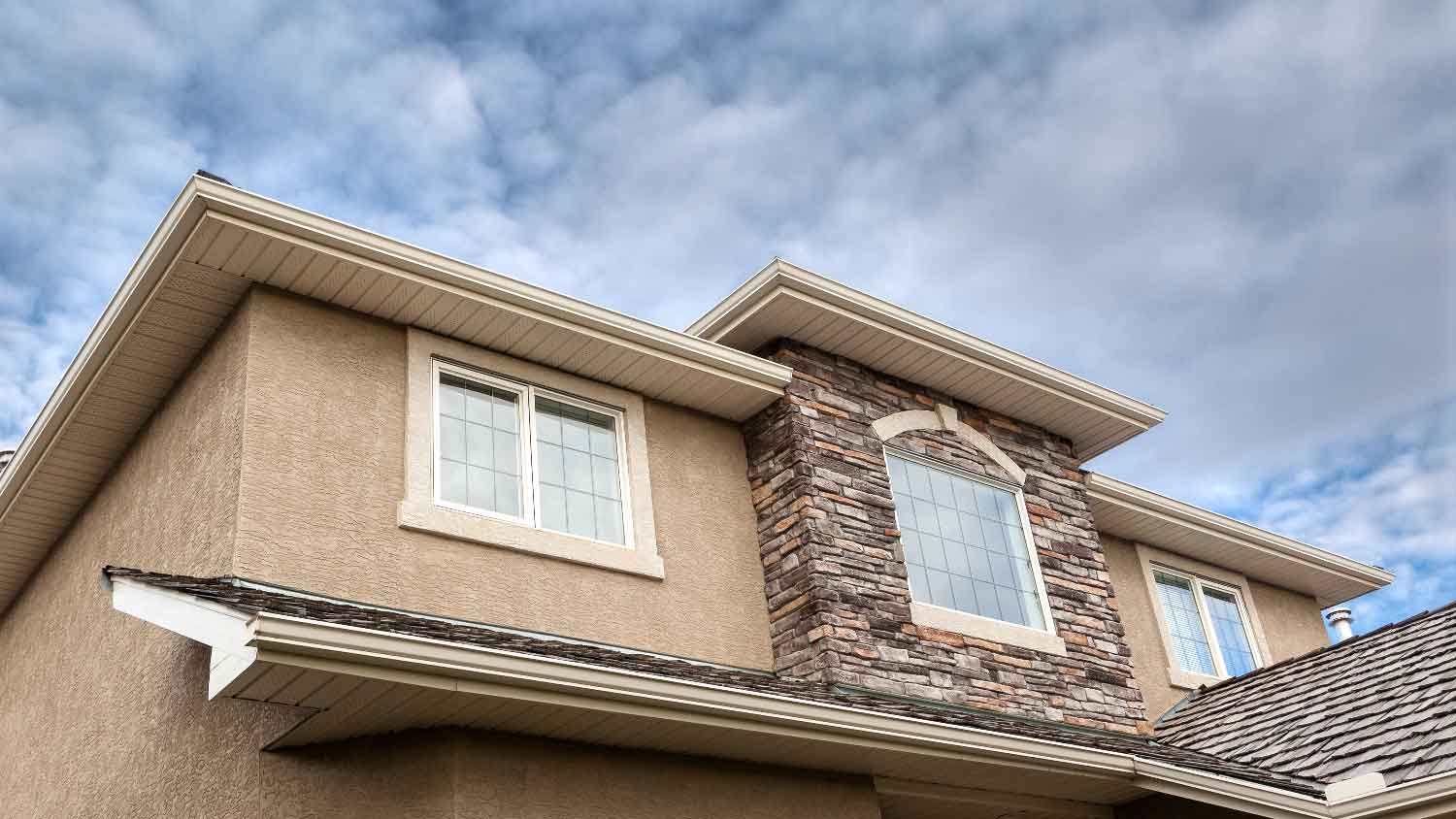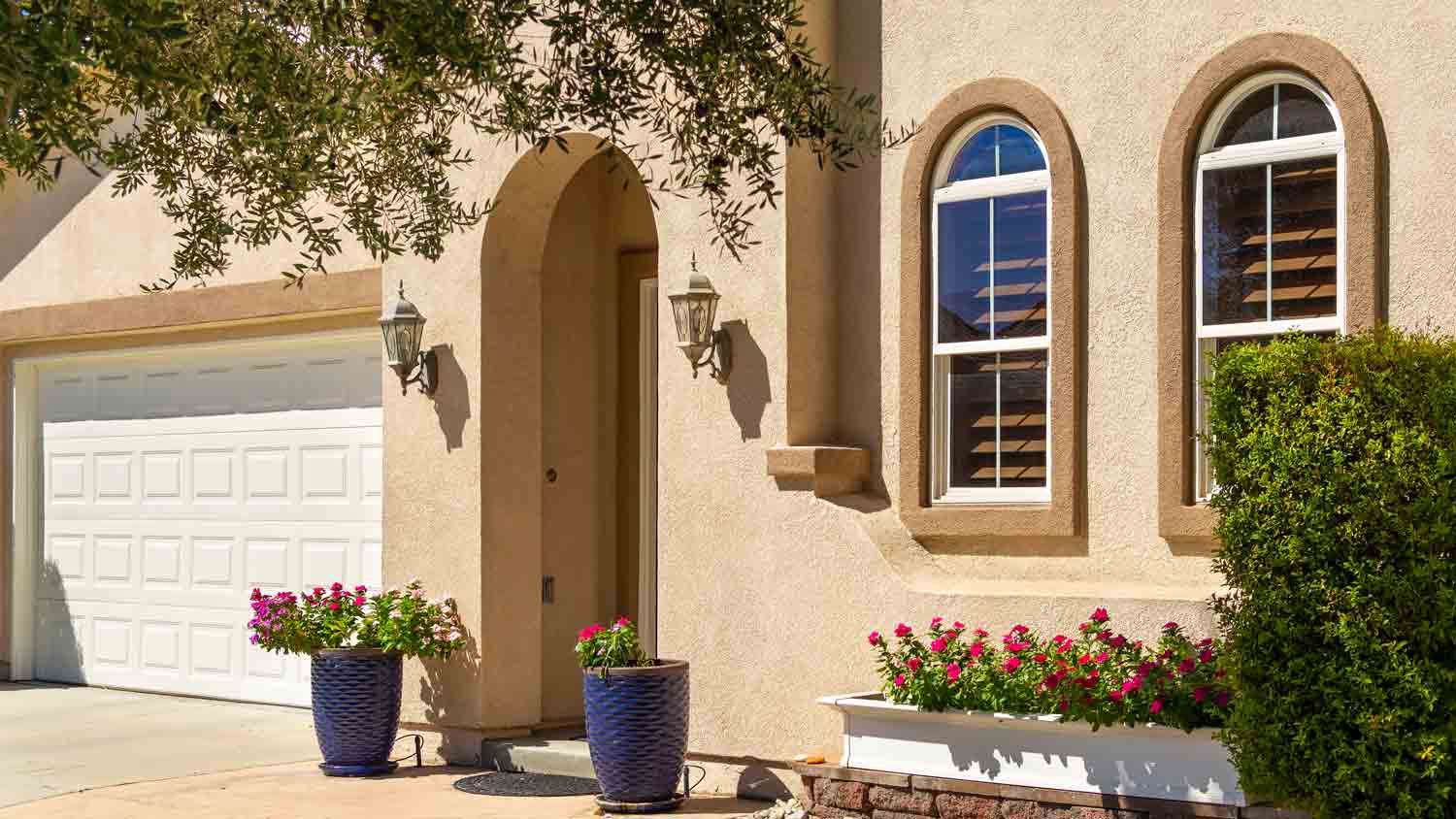
Discover the average stucco repair cost, key price factors, and ways to save. Get expert tips to budget your stucco repair project with confidence.
Stucco can definitely stand the heat


Stucco is one of the best siding options in areas where wildfires are a threat.
Stucco can prevent the spread of fire to your home’s interior for one hour if installed properly.
Stucco, fiber cement board, brick, stone, and metal are the best siding options for fire resistance.
A professional stucco contractor can ensure your siding is installed properly for maximum protection.
Nothing is more important than protecting your family and your home, which is why it’s crucial that you choose a fire-resistant siding if you live in an area where wildfires are a threat. If you’re weighing your options, you may be wondering if stucco is actually fire-resistant. While it’s not exactly fireproof, stucco is one of the best siding materials to prevent the spread of fire for a few key reasons.
Stucco is not fireproof, but it is fire-resistant. When exposed to wildfires, all types of stucco—traditional, synthetic, and acrylic—can prevent the flames from spreading to more combustible building materials inside for one hour. Comparing stucco to vinyl siding, vinyl will melt within minutes and expose your home’s interior to flames. Materials like wood siding are highly flammable and can spread fire to your structural components even more quickly.
Stucco is made from Portland cement, lime, sand, and water—none of these materials are combustible. This is the primary reason why stucco stands up so well to fire. As it’s exposed to heat, though, the material will shrink and crack, giving the fire outside an avenue to enter your home and ignite other materials.
Additionally, siding becomes more resistant to fire when there’s no air gap between it and the sheathing behind it. When a professional installs stucco, they apply it over a metal lath, which sits directly against the sheathing. The lack of an air gap you wouldn’t get with other siding materials improves performance.
Fire-resistant siding can quite literally be a life-saving investment. Most importantly, it can give you and your family ample time to get to safety before your structure is compromised and the fire reaches your living space. It also creates more time for firefighters to respond to an emergency call, which means you have a much better chance of them extinguishing the fire before it damages your home’s interior.
Finally, fire-resistant siding materials like stucco add more to home value in areas where wildfires are an issue, so your ROI will be higher because of its performance.
According to the Office of Energy Efficiency and Renewable Energy, stucco has a “high” fire resistance rating—the highest of any siding material. At the standard 1-inch thickness, stucco can withstand direct exposure to the heat and flames of a wildfire for one hour before the fire can burn through it.

Stucco, brick, stone, metal, and fiber cement siding are the best siding options for protection against wildfires, and they all have “high” fire ratings. When installed properly, these materials can all protect you and your home for longer than any siding alternatives.
Solid wood and wood panels have a “medium” fire rating, but you can improve fire resistance by treating them with a fire retardant spray. Still, they’re not ideal for homes in areas where wildfires are a risk, as wood is combustible and will readily spread fire to other materials. Stucco is a better option than wood siding where fires are a risk.
Wood-plastic composite (WPC) and vinyl siding have “low” fire ratings, meaning they will melt or ignite within minutes of fire exposure. These are never good options if wildfires are a threat in your area.
| Siding Material | Fire Resistance |
|---|---|
| Brick | High |
| Fiber cement | High |
| Metal (aluminum) | High |
| Stone | High |
| Stucco | High |
| Solid wood | Medium |
| Treated wood | Medium |
| Composite | Low |
| Vinyl | Low |
Stucco siding provides excellent fire resistance, but there are some things you can have your local stucco contractor do to improve performance and safety.
Ensure proper material thickness. Stucco must be at least one inch thick to provide that hour of fire resistance. Most professionals will always aim for that thickness, but be sure to speak with your contractor to check that they won’t go any thinner.
Avoid breaks in the walls. Wooden beams protruding from stucco siding are decorative and improve curb appeal, but they also put fire on a fast track into your living space. Avoid decorative breaks in the wall for maximum protection.
Make other areas fireproof, as well. Fire-resistant siding will always improve safety in the event of a wildfire, but your builder should also address weaknesses in soffits, roofing materials, and other areas for maximum safety.
From average costs to expert advice, get all the answers you need to get your job done.

Discover the average stucco repair cost, key price factors, and ways to save. Get expert tips to budget your stucco repair project with confidence.

Get transparent stucco inspection cost info. Learn what impacts price, how to save, and what to expect before hiring a pro for your stucco inspection.

Discover the cost to stucco a house in 2025, including average prices, key factors, and tips to help you budget and plan your stucco project with confidence.

Wondering if stucco increases home value? The short answer is, yes, but the ROI you’ll see depends on a few factors, like location and installation costs.

Learn about stucco pros and cons to see if this siding option is a good fit for your home, budget, and climate, and see alternatives in case it gets a pass.

Installing new stucco gives your home a facelift and boosts home value. But can you stucco over stucco? You can, but there are some things to consider.